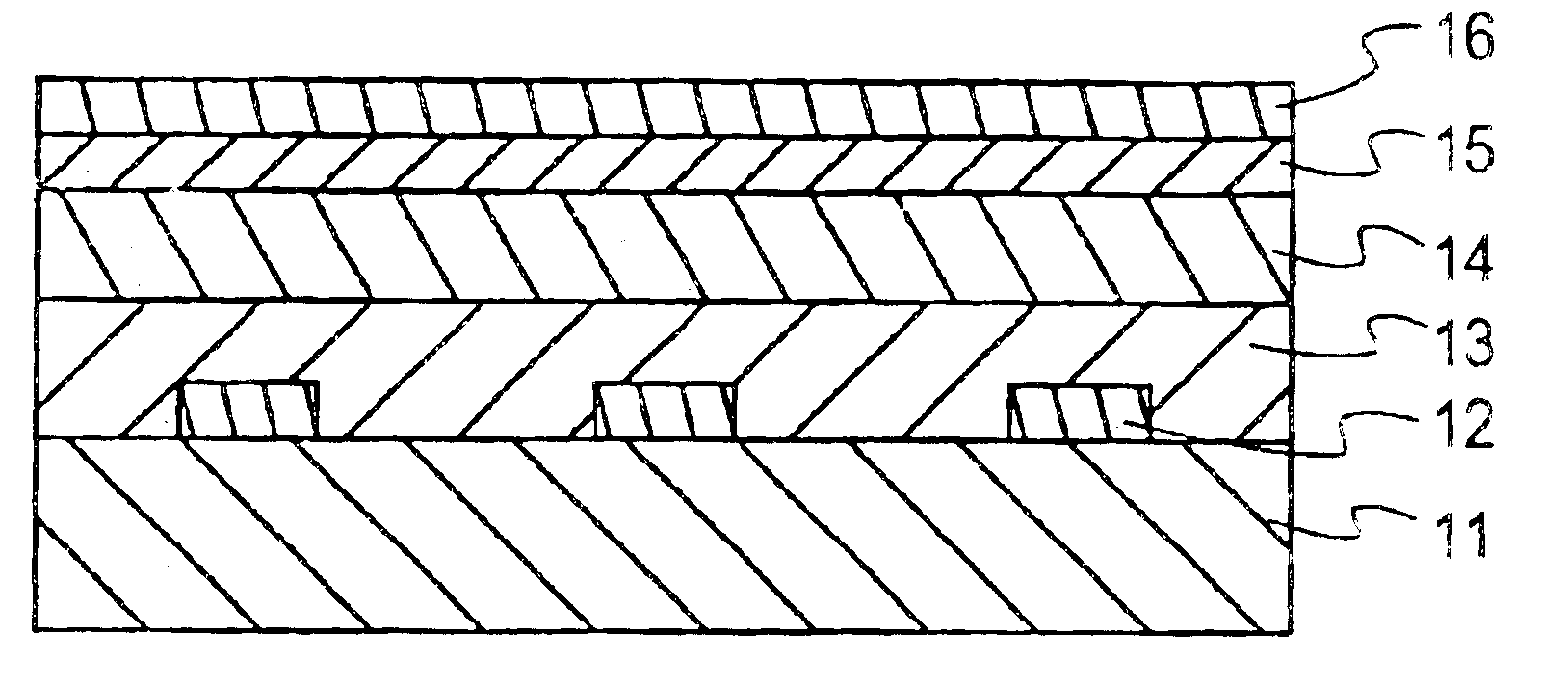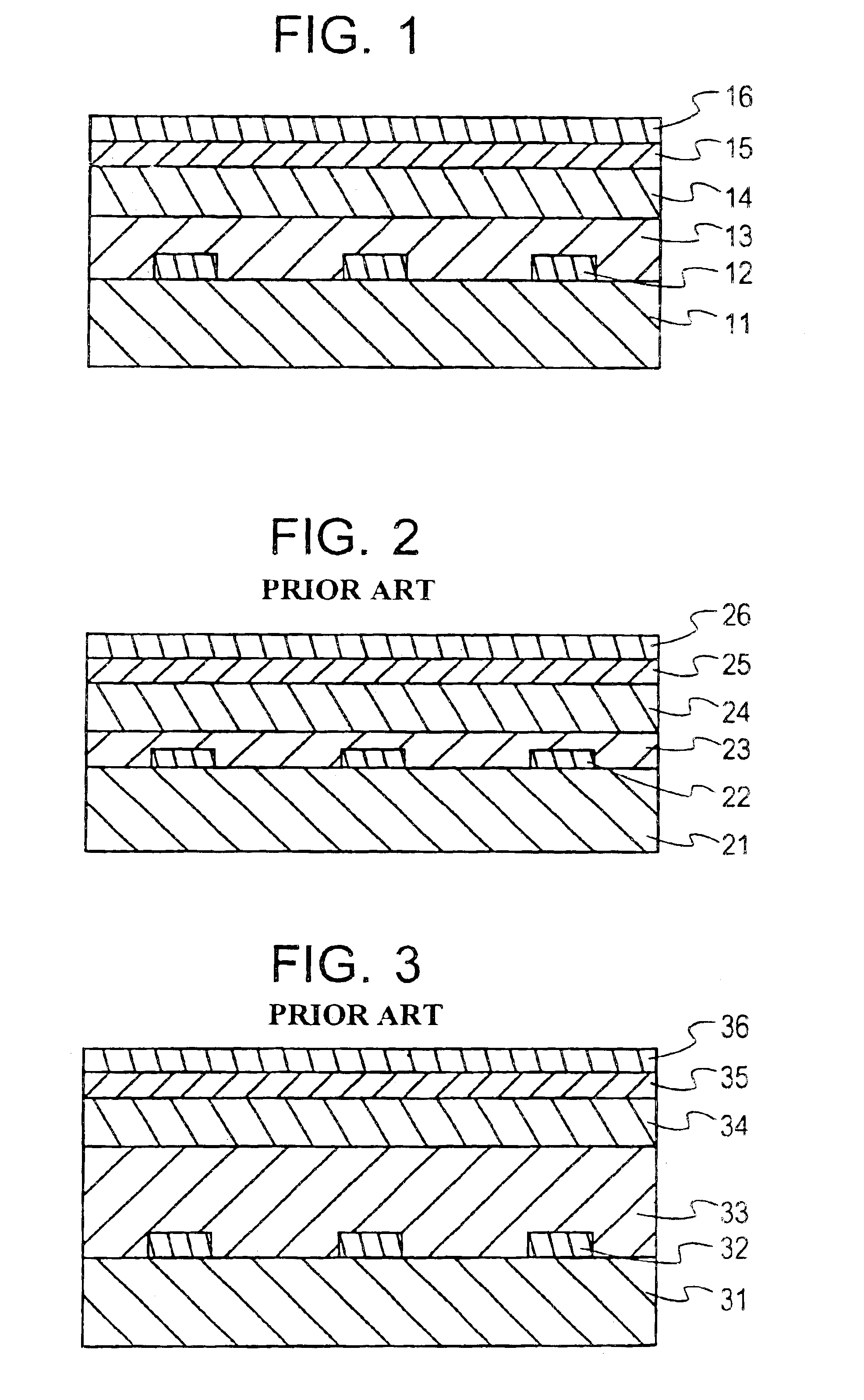EL device
a technology of a device and a discharge tube, applied in the field of el devices, can solve the problems of low yield, low yield, and high applied driving voltage needed for the device to emit light, and achieve the effect of stable light emission performan
- Summary
- Abstract
- Description
- Claims
- Application Information
AI Technical Summary
Benefits of technology
Problems solved by technology
Method used
Image
Examples
example
[0074]A binder was mixed with a mixture of Al2O3 powders with SiO2, MgO and CaO powdery additives to prepare a paste, which was then cast into a green sheet forming a ceramic substrate of 1 mm in thickness. Using a screen printing process, a Ni paste was formed on this ceramic precursor according to a striped pattern of 0.3 mm in width, 0.5 mm in pitch and 1 μm in thickness. For the material for the first insulator layer, a paste containing pre-fired powders having the composition shown in Table 1 was prepared, This paste was then printed all over the surface of the green sheet with the electrode pattern formed thereon. The post-firing thickness of the printed paste was 4 μm.
[0075]
TABLE 1Composition of Dielectric MaterialBreakdownFilmEmissionSampleMgOMnO(Ba, Ca)SiO2Y2O3FieldThicknessStart VoltageNo.(mole)(mole)(wt %)(Mole)ε s(MV / m)(μm)(V)110.1950.042850150452.8210.37550.272530150453.0310.1950.182920150452.7410.37550.272690150452.9510.37550.093040150452.7610.375503070150452.77 (compa...
PUM
| Property | Measurement | Unit |
|---|---|---|
| thickness | aaaaa | aaaaa |
| average crystal grain diameter | aaaaa | aaaaa |
| dielectric strength | aaaaa | aaaaa |
Abstract
Description
Claims
Application Information
 Login to View More
Login to View More - R&D
- Intellectual Property
- Life Sciences
- Materials
- Tech Scout
- Unparalleled Data Quality
- Higher Quality Content
- 60% Fewer Hallucinations
Browse by: Latest US Patents, China's latest patents, Technical Efficacy Thesaurus, Application Domain, Technology Topic, Popular Technical Reports.
© 2025 PatSnap. All rights reserved.Legal|Privacy policy|Modern Slavery Act Transparency Statement|Sitemap|About US| Contact US: help@patsnap.com


